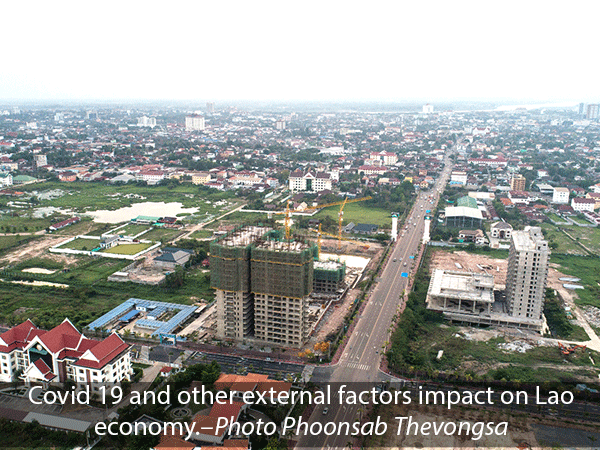World Bank downgrades Lao economic growth rate to 3.8 percent
Laos’ economy is projected to expand by 3.8 percent in 2022, down from the 4.5 percent growth rate predicted in October last year and 3.3 percent in the downside scenario, according to the World Bank’s latest report.
The World Bank’s East Asia and Pacific Economic Update: Braving the Storms emphasised that the Ukraine crisis threatens the uneven recovery of developing East Asia and Pacific (EAP) countries, including Laos, from the Covid-19 shock.
 |
The Ukraine crisis comes on top of the economic distress caused by the lingering Covid-19 pandemic, financial tightening in the United States, and the pandemic resurgence amidst zero-Covid policies in China. The Russia-Ukraine conflict is disrupting the supply of commodities, increasing financial stress, and dampening global growth.
“Countries in the region that are large importers of fuel – like Mongolia and Thailand, and food – like the Pacific Islands – are seeing a decline in real incomes. Countries with large debt – like Laos and Mongolia – and high dependence on exports – like Malaysia and Vietnam – are susceptible to global financial and growth shocks,” the World Bank stated.
Overall economic growth for East Asia and Pacific is projected to slow to 5 percent in 2022 - 0.4 of a percentage point less than expected in October. If global conditions worsen and national policy responses are weak, growth could slow to 4 percent.
China, which accounts for 86 percent of regional output, is projected to grow 5 percent in the baseline and 4 percent in the downside scenario.
In the downside scenario, 6 million more people in the region would remain trapped in poverty in 2022 at the US$5.50/day poverty line.
Growth is expected to accelerate in 2022 from last year in Indonesia (5.2 percent in the baseline, 4.6 percent in the downside), Thailand (2.9 percent in the baseline, 2.6 percent in the downside), the Philippines (5.7 percent, 4.8 percent in the downside), Malaysia (5.5 percent in the baseline, 4.8 percent in the downside), and Vietnam (5.3 percent, 4 percent in the downside).
According to the World Bank, EAP countries also remain heavily dependent on indirect taxes, which have declined with Covid-19 cuts in consumption.
To increase revenues, governments can enact fiscal reforms, as Indonesia is doing. Fiscal deficits are sizable in all major economies and exceptionally large in Fiji, Palau and Timor-Leste. The interest payment burden in very significant in Indonesia, Laos, Papua New Guinea, and Mongolia.
“Countries must ensure adequate capitalisation of banks with large loans at risk; hedge and extend the maturity of debt to address currency mismatches and rollover risk; enhance liquidity buffers and secure lines of credit to anticipate potential increases in external financing needs.”
“Countries with unsustainable external debt, like Laos and some of the Pacific Island countries, would benefit from the development of a more effective international debt resolution framework,” the report added.
By Somsack Pongkhao
(Latest Update April 6, 2022)
|